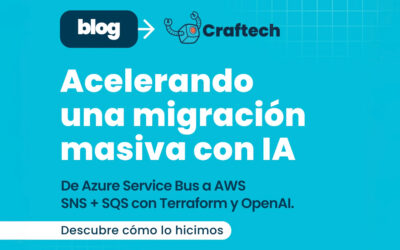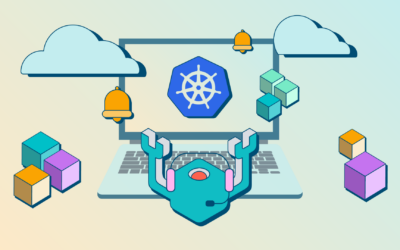
Is your cloud infrastructure struggling to keep pace with your business growth?
Discover how an Internal Developer Platform (IDP) on AWS can change everything.
In today’s business environment, time and operational efficiency are two of the biggest challenges for IT teams. When multiple steps, tools, or tickets are needed just to spin up environments, pipelines, or services, delivery becomes slower, more expensive, and error-prone.
The solution? Automate your processes with a developer-focused platform on AWS that enhances the DevOps experience and reduces complexity—without compromising on security or control. Yes, we’re talking about an IDP.
What is an Internal Developer Platform (IDP)?
An IDP connects your cloud infrastructure (e.g., EKS, IAM, S3), CI/CD pipelines, observability, and security policies into a unified environment accessible by developers.
It enables developers to create cloud environments in AWS without relying on a DevOps team, standardizes technical workflows, and unlocks frictionless scaling.
What problems does an IDP solve?
- Lack of standardization in deployments
- Heavy reliance on DevOps teams for repetitive tasks
- Inconsistent pipeline configurations
- Slow or manual environment creation
- Complex AWS scaling processes
- Difficulty applying governance and security from the start
Benefits of implementing an IDP
- Automated AWS deployments following best practices
- Greater autonomy for development teams
- Reduced operational burden for infrastructure teams
- Auditable, traceable technical workflows
- Native integration with leading tools like Port, SleakOps, GitHub Actions, and Terraform
All of this directly improves delivery speed, code quality, and technical onboarding.
How to build a modern IDP on AWS
The key is to integrate your existing tools with a unifying platform engineering layer. Below is a tech stack suggested by Craftech

The Ideal Roadmap to Scale
1. Technical Diagnosis
- Identify current bottlenecks
- Evaluate tools and integration points
- Review compliance with the AWS Well-Architected Framework
2. MVP Buildout
- Create a self-service service catalog
- Enable actions like “create environment” or “deploy pipeline”
- Apply technical standards from the design phase
3. Continuous Measurement
- Use DORA Metrics and the SPACE Framework to measure impact
- Define repeatable improvement patterns
- Implement observability from the very first deployment
What results can you expect?
- Faster and more consistent deployments
- Seamless AWS scalability without added complexity
- Fewer manual tasks and internal tickets
- Centralized catalog with applied technical governance
This doesn’t just improve operational efficiency, it transforms the developer experience.
Conclusion
Startups that scale successfully on AWS have one thing in common: standardized infrastructure, automated deployments, and internal platforms that unlock speed without sacrificing quality.
“An IDP isn’t just a tool—it’s a mindset. It’s how you turn your cloud architecture into a scalable, governed internal product.”
Want to assess if your current setup is ready to scale?
Book a free technical assessment with our specialists.





